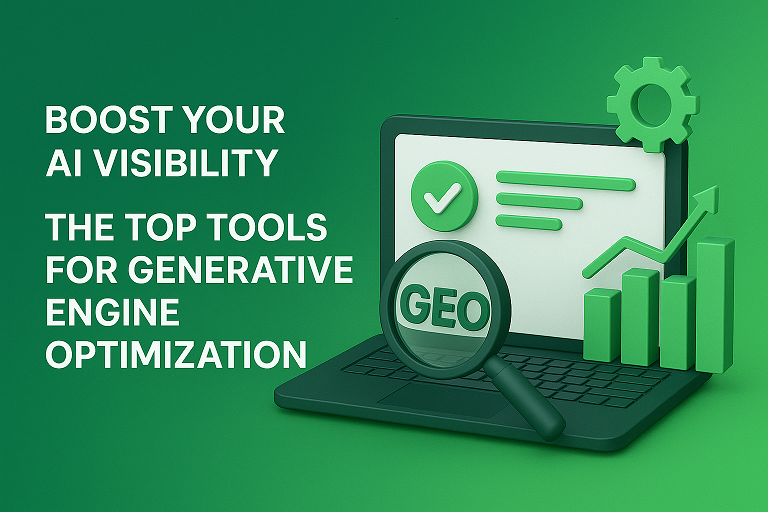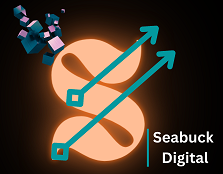
Introduction
AI-powered answer engines (ChatGPT, Gemini, Perplexity, etc.) are becoming the first place people ask questions. That means “ranking” isn’t just about page-one anymore — it’s about being the trusted source AI cites. This article walks you through what Generative Engine Optimization (GEO) is, the must-have features of a GEO tool, and the best platforms today to boost your AI visibility — with pricing and quick takes so you can act fast.
What is Generative Engine Optimization (GEO)?
Definition: GEO in one line
Generative Engine Optimization (GEO) is the set of practices and tools that help your brand get discovered, correctly cited, and favorably represented inside AI-generated answers and overviews. In short: GEO = get AI to use you as the source it trusts.
How GEO differs from traditional SEO
Traditional SEO focuses on clicks, rankings, and keyword slots on SERPs. GEO focuses on prompts, citations, and whether LLMs reference your content when they answer. Think of SEO as optimizing a shop window for human shoppers; GEO optimizes your brand’s product label inside the encyclopedia the AI uses to answer a shopper’s question.
Why being the ‘source of truth’ matters for AI answers
When LLMs synthesize answers, they often pull facts from a small set of trusted sources. If you’re in that set, you get citations, visibility, and — crucially — traffic and conversions that follow. Studies and platform analyses show domain authority, backlinks, and topical coverage still correlate with AI visibility — but GEO tools help you close the gap between being visible and being cited.
Key Features of a Great GEO Tool
Before you pick a vendor, make sure any tool you consider offers the practical capabilities below.
Brand Mention Tracking
Track where your brand or product is being mentioned inside AI answers and overviews — not just raw web mentions. This reveals which prompts trigger your brand. (Critical for offense + defense.)
Sentiment Analysis
Does AI present your brand positively or as a liability? Sentiment scoring helps you spot and fix negative framings in answers.
Competitive Analysis
Benchmark your AI share-of-voice against competitors and discover which domains the models prefer as sources. Good GEO tools surface competitor citations and opportunity gaps.
Content Optimization (AI-ready content)
AI-focused recommendations (prompt-level suggestions, content snippets LLMs prefer, structured data suggestions) — not just “add keywords.”
Technical GEO Audits
Crawlability for AI: identify robots, canonical issues, or content-formatting problems that stop LLMs and knowledge graphs from ingesting your content.
The Top Tools for Generative Engine Optimization
Writesonic — GEO + AI writing in one place
Summary
Writesonic bundles AI-content creation with AI-search/GEO tracking — a one-stop for writing AI-optimized content and watching how it shows up in answer engines.
Key Features
- AI Search Visibility / GEO tracking across ChatGPT, Perplexity, Google AI overviews.
- Built-in AI article writer and content optimizer.
- Prompt-level tracking and sentiment reporting.
Pricing
Plans start from monthly tiers (Lite → Advanced → Enterprise); GEO-focused capabilities are in paid tiers (pricing examples and tiers listed on their site).
Why it’s on this list
If you want content + GEO analytics without stitching many tools together, Writesonic’s pair of writing + visibility features is compelling for teams that move fast.
Profound — Enterprise-grade AI visibility
Summary
Profound targets enterprise teams with deep analytics: prompt volumes, conversation explorer, and dashboards that show where AI is talking about your industry in real time.
Key Features
- Real-time AI prompt volumes and conversation explorer.
- AI Visibility dashboards and competitor benchmarking.
- Content briefs and optimization workflows.
Pricing
Enterprise-oriented; custom pricing (and tiered feature bundles). Contact vendor for quotes.
Why it’s on this list
Built for scale and data depth — Profound is ideal for brands that need full-fidelity AI conversation analytics and enterprise-grade integrations.
Goodie (Goodie AI) — AEO/GEO specialist
Summary
Goodie (marketed as an Answer Engine Optimization platform) focuses exclusively on AI-answer visibility and reputation across LLMs and answer engines.
Key Features
- Unified AI visibility dashboard (ChatGPT, Gemini, Perplexity, Claude).
- Brand mention alerts and sentiment scoring.
- AI-optimized content recommendations.
Pricing
Starts at enterprise-level tiers; publicly reported starting figures are in the mid-hundreds USD per month for mid-market plans—enterprise pricing varies.
Why it’s on this list
Goodie is built for brands focused specifically on how LLMs cite and characterize them — a specialist tool for brand safety and citation growth.
Ahrefs — Traditional SEO with AI visibility modules
Summary
Ahrefs extends its market-leading backlink and content-indexing data into AI visibility features (Brand Radar / AI indexes), giving a data-rich view of where AI is sourcing its answers.
Key Features
- AI visibility indexes covering prompts and AI citations.
- Deep backlink + topical correlation studies that help explain AI visibility factors.
- Site Explorer + Content Explorer integrations for competitive intelligence.
Pricing
Standard Ahrefs plans (Lite → Advanced → Agency/Enterprise) — full toolset access; see Ahrefs pricing page for current tiers.
Why it’s on this list
If you already use Ahrefs for backlinks and topical research, its AI visibility dataset makes it a logical extension to track GEO within an established analytics workflow.
Semrush — AI SEO toolkit + AI visibility metrics
Summary
Semrush’s AI SEO toolkit and AI Visibility features help you measure AI share-of-voice, sentiment, and which queries produce AI answers that cite your site. Great for teams that want action items tied to SEM/SEO performance.
Key Features
- AI Visibility Index and prompt-level insights.
- Content optimization recommendations tuned to AI queries.
- Integration with the larger Semrush stack (PPC, content, PR).
Pricing
Semrush tiers apply; specific AI-toolkit access may be a separate subscription or add-on. Check Semrush pricing for the latest.
Why it’s on this list
Semrush is broad and action-oriented — good for teams that want GEO signals tied to practical content and marketing workflows.
Peec AI — Prompt- & prompt-volume focused GEO
Summary
Peec AI centers on prompts and prompt volumes — which prompts are being asked of AIs and which ones trigger your content — a very practical approach for opportunistic content creation.
Key Features
- Prompt discovery and monitoring.
- Visibility alerts, multi-market tracking.
- Agency-focused reporting and workspace features.
Pricing
Tiered pricing (Starter / Pro / Enterprise) — example starts frequently reported around €89/month for entry tiers up to €499+ for enterprise.
Why it’s on this list
If you want a fast way to know which natural-language prompts to optimize for, Peec is built around that exact data model.
XFunnel — AI citation & conversion focus
Summary
XFunnel blends AI visibility tracking with conversion optimization — it’s useful when your GEO program must also improve downstream conversions and UX for traffic coming via AI sources.
Key Features
- Citation tracking, question analytics, persona-level insights.
- Conversion optimization recommendations and conversion monitoring.
Pricing
Offers flexible pricing with free trials and enterprise plans — contact for specifics.
Why it’s on this list
Good for teams that treat AI visibility as part of a funnel — not just brand metrics but conversion outcomes.
Rankscale.ai — AI-overview & prompt tracking
Summary
Rankscale focuses on tracking AI overviews and prompt triggers, with a credit-based model that scales from essentials to enterprise.
Key Features
AI overview tracking, prompt-level insights, competitor comparison.
Scalable credit-based pricing.
Pricing
Credit-based plans starting from low-cost tiers (examples show starting points around €20/month); enterprise options available.
Why it’s on this list
Strong on AI-overview monitoring with an accessible pricing model for teams that want to experiment.
AI Monitor — Brand protection & reputation in LLMs
Summary
AI Monitor is built for brand protection: monitoring potentially damaging AI responses, tracking brand sentiment, and alerting on false or risky AI content related to your brand.
Key Features
- Reputation alerts across major AI platforms.
- Visibility analysis and remediation suggestions.
- Flexible, usage-based pricing options.
Pricing
Flexible / usage-based — vendor quotes and plans via their pricing page.
Why it’s on this list
When brand safety matters (PR teams, healthcare, finance), AI Monitor gives the defensive capabilities GEO needs.
How to Choose the Right GEO Tool for You
Consider your budget
Some GEO tools are enterprise-priced (Profound, Goodie), others are tiered for SMBs (Peec, Rankscale, Writesonic). Match initial spend to the value you expect (mentions → traffic → conversions).
Evaluate team size & expertise
Small teams may prefer all-in-one content + GEO (Writesonic). Larger teams may want raw data & integrations (Ahrefs, Profound).
Identify specific GEO goals
Do you want brand citations, conversion lift, reputation protection, or prompt discovery? Choose a tool whose strengths map to that goal. (For example, pick AI Monitor for brand safety; Peec for prompt discovery.)
Trial, integrations, and data portability
Try the demo, check integrations (GA, BigQuery, APIs), and ensure you can export data for long-term analysis. Enterprise contracts vary widely — negotiate data access.
Technical SEO & Implementation Tips for GEO
Meta description, URL slug & AI-friendly headings
Write short meta descriptions that summarize the page’s factual value (one sentence). Use conversational H1/H2 phrases that resemble real prompts people would ask (e.g., “How does X help reduce costs?”). Example slug: `/blog/best-geo-tools`. These small signals help AI map content to prompts.
Sample meta description: Boost your brand’s presence inside ChatGPT, Gemini, and Perplexity — explore top GEO tools, pricing, and how to pick the right one. (≈ 140 characters)
Schema markup: Article + FAQPage (example JSON-LD
Include `Article` schema for the page and an `FAQPage` block for the Q\&A you add — these help AI and search engines understand content structure.
“`json
{
“@context”: “https://schema.org”,
“@type”: “Article”,
“headline”: “Boost Your AI Visibility: The Top Tools for Generative Engine Optimization”,
“author”: {“@type”:”Person”,”name”:”Your Name”},
“datePublished”: “2025-09-24”,
“mainEntityOfPage”: “https://yourwebsite.com/blog/best-geo-tools”
}
Add an `FAQPage` JSON-LD for the FAQs below.
Images, alt text, site speed, and canonicalization
Use small, high-quality landscape images with descriptive alt text (e.g., “GEO tool dashboard showing AI citations for Brand X”). Keep pages fast and canonical tags consistent — many AI pipelines trust canonical signals when choosing sources.
The Future of Generative Engine Optimization
GEO will mature fast: expect multi-modal citation (images, tables), deeper integrations with knowledge graphs, and stronger emphasis on “helpful, reliable, people-first content.” The winners will be the brands that pair great data (citations + backlinks) with clear, authoritative content that AIs can easily parse. Tools will continue converging — content generation, visibility tracking, and reputation management in one workflow.
Conclusion
GEO is the new frontier: not replacing SEO, but extending it into the way AI tools recommend and cite sources. Pick a tool that matches your goals — prompt discovery (Peec), enterprise analytics (Profound, Ahrefs), content + GEO (Writesonic), or reputation protection (AI Monitor). Start small, measure citations and conversions, then scale the tools and processes that move the needle.
Frequently Asked Questions (FAQs)
Is Generative Engine Optimization (GEO) a replacement for SEO?
No — GEO complements SEO. SEO remains essential for organic rankings and traffic; GEO ensures AIs cite you and represent your brand correctly. Both together maximize visibility.
Which GEO tool is best for small teams on a budget?
Peec AI and Rankscale offer lower starting tiers for prompt discovery and basic visibility tracking; Writesonic can be cost-effective if you want content + GEO in one platform.
How do GEO tools measure ‘mentions’ inside AI answers?
They index AI outputs (overviews, LLM answers, and selected datasets), map prompts to outputs, and detect explicit and implicit citations or references to domains and brands. This indexing is the core of visibility metrics.
Will adding schema help GEO visibility?
Yes — structured data (Article, FAQPage) helps AIs parse your facts and increases the chance your content is used as a clean, citable source. But schema alone won’t guarantee citations — topical authority and linking matter too.
How should I measure GEO success?
Track: (1) AI citation share-of-voice, (2) referral traffic from AI-driven sources, (3) sentiment in AI responses, and (4) conversions from AI-origin visits. Use baseline and trend analysis, not just one-off reports.

